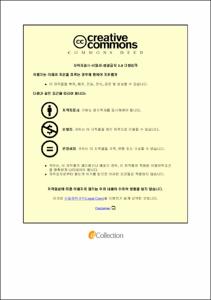진해만 해역에서의 패류양식수질지수(SWQI) 산정에 관한 연구
- Alternative Title
- A study on Estimation of Shellfish farming Water Quality Index(SWQI) in Jinhae Bay, Korea
- Abstract
- Jinhae Bay has a low flow rate due to its semi-enclosed topographical characteristic, it has been used as a Shellfish farm area since the past due to the inflow of large amounts of nutrient salts from the surrounding rivers, and is a representative sea area of Shellfish farming in Korea. In addition, water quality is gradually improving due to continuous water management measures such as special management sea areas and total pollution control systems. However, despite the improvement in water quality, the annual production of the shellfish has been maintained or decreased since 2012. Therefore, it is necessary to maintain and evaluate the proper water quality considering the productivity of the shellfish in order to improve the productivity of the shellfish farms in Jinhae Bay.
This paper is a basic study for the continuous productivity improvement of the shellfish farm in Jinhae Bay and utilized the water quality factors (DO, COD, DIN. DIP, chl-a, SD) and the production per unit area of shellfish farm from 2004~2018. Water Quality Index(WQI) was calculated using the method announced by the Ministry of Maritime Affairs and Fisheries. Shellfish farming Water Quality Index(SWQI) was calculated using the scores and weighting of water quality factors. The scores of water quality factors were calculated using the concentrations of water quality factors in the year when the production of shellfish farms was the highest, and the weightings were set using principal component analysis. The correlation analysis of WQI and SWQI with the production of shellfish farms showed correlation coefficients of -0.12 and 0.63, and SWQI showed more significant correlation. Therefore, SWQI was estimated by forecasting the water quality factors from 2019 to 2028 through time series analysis. As a result, when looking at the variation of SWQI sea area, grade IV increased by 29.3%, grade III decreased by 23.7%, and grade V decreased by 5.6%. In addition, SWQI decreased in waters close to land and in large-scale farms, and increased in the central of Bay and Gadeok channel. Therefore, in order to improve and maintain productivity of shellfish farms in Jinhae Bay, it is necessary to manage the pollutant load flowing from land and to evaluate the farm self-pollution.
- Issued Date
- 2020
- Awarded Date
- 2020. 2
- Type
- Dissertation
- Publisher
- 부경대학교
- Alternative Author(s)
- Seung-Hwan Jin
- Affiliation
- 부경대학교 대학원
- Department
- 대학원 해양공학과
- Advisor
- 이인철
- Table Of Contents
- 1. 서론 1
1.1 연구 배경 및 목적 1
1.2 연구내용 3
2. 재료 및 방법 5
2.1 수질의 경년변동 해석 5
2.2 진해만 패류양식장 단위면적당 생산량 산정 7
2.3 수질평가지수(WQI)의 산정 9
2.3.1 수질환경인자의 점수화 10
2.3.2 수질평가지수(WQI) 산정 12
2.4 패류양식수질지수(SWQI)의 산정 13
2.4.1 수질환경인자의 기준값 설정 및 점수화 14
2.4.2 주성분분석을 통한 가중치 설정 15
2.4.3 패류양식수질지수(SWQI) 산정 18
2.5 패류양식수질지수(SWQI)의 평가 및 예측 19
2.5.1 패류양식수질지수(SWQI) 적용성 검토 19
2.5.2 수질환경인자의 예측 19
2.5.3 패류양식수질지수(SWQI) 예측 23
3. 결과 및 고찰 24
3.1 수질의 경년변동 해석 결과 24
3.2 진해만 패류양식장 단위면적당 생산량 산정 결과 30
3.3 수질평가지수(WQI)의 산정 결과 32
3.3.1 수질환경인자의 점수 결과 32
3.3.2 수질평가지수(WQI) 산정 결과 34
3.4 패류양식수질지수(SWQI)의 산정 결과 37
3.4.1 수질환경인자의 기준값 및 점수화 결과 37
3.4.2 주성분분석을 통한 가중치 결과 40
3.4.3 패류양식수질지수(SWQI) 산정 결과 42
3.5 패류양식수질지수(SWQI)의 평가 및 예측 45
3.5.1 패류양식수질지수(SWQI) 적용성 검토 결과 45
3.5.2 수질환경인자의 예측 결과 48
3.5.3 패류양식수질지수(SWQI) 예측 결과 53
4. 요약 및 결론 62
참고문헌 64
- Degree
- Master
- Files in This Item:
-
-
Download
 진해만 해역에서의 패류양식수질지수(SWQI) 산정에 관한 연구.pdf
기타 데이터 / 2.07 MB / Adobe PDF
진해만 해역에서의 패류양식수질지수(SWQI) 산정에 관한 연구.pdf
기타 데이터 / 2.07 MB / Adobe PDF
-
Items in Repository are protected by copyright, with all rights reserved, unless otherwise indicated.